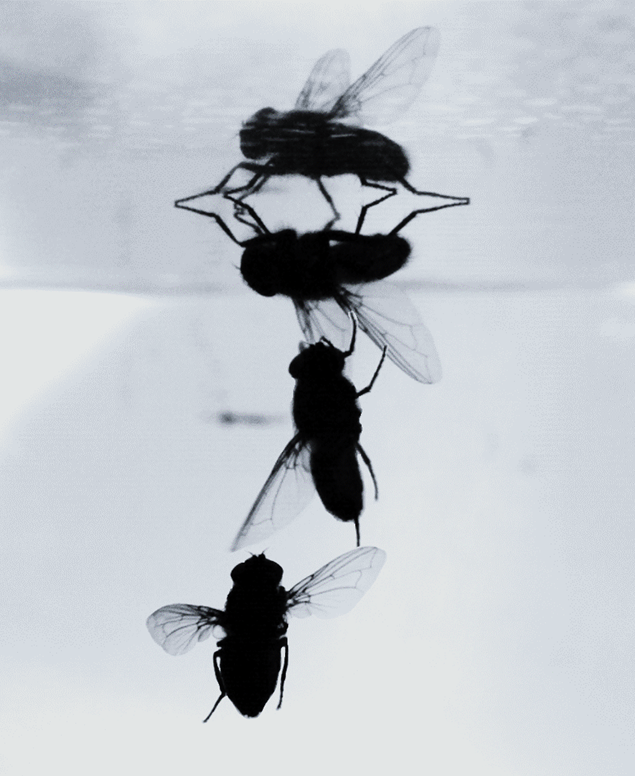Mechanical engineering faculty studies flying insects to create better drones
August 21, 2018
UNIVERSITY PARK, Pa. - A $500,000 grant from the National Science Foundation (NSF) Robust Intelligence Program will support research to study biological flyers to create vision-guided perching in drones.
“In the blink of an eye, a fly can perch upside-down on a ceiling by executing a sequence of well-coordinated maneuvers triggered and controlled by a brain no bigger than a pinhead,” Bo Cheng, assistant professor of mechanical engineering at Penn State, said. “This project aims to unravel how the robust intelligence of this process emerges from a synergistic combination of computational and mechanical processes.”
Over a three-year period, Cheng and his team will examine the biomechanical and neural processes that blue bottle flies use to land on different surfaces like ceilings and moving objects.

He said, “We will design targeted experiments to manipulate the visual cues the flies receive when they land, so we can dig into their flight control system to see what information and strategies they use to land.”
In collaboration with Jianguo Zhao, assistant professor of mechanical engineering at Colorado State University, Cheng explained, “Then, their researchers will translate that knowledge to the robotic flyers.”
The potential impacts of this research could lead to innovations in environmental and disaster monitoring, aerial surveillance, and search and rescue operations.
“If a robot can land anywhere it wants in a disaster zone, it can recharge or observe the surrounding environment for survivors,” Cheng said. “It will dramatically increase the usefulness of robotic flyers.”
This grant will further fuel Cheng’s exploration into biological creatures to inspire better robotic design.
“The physics of how insects fly is so complex and simple at the same time,” he said. “These insects have entire flight packages in such a small unit. Emulating this in engineering is a difficult job, but I see it as a lifelong pursuit for me.”
MEDIA CONTACT:
Erin Cassidy Hendrick
emc5045@engr.psu.edu



